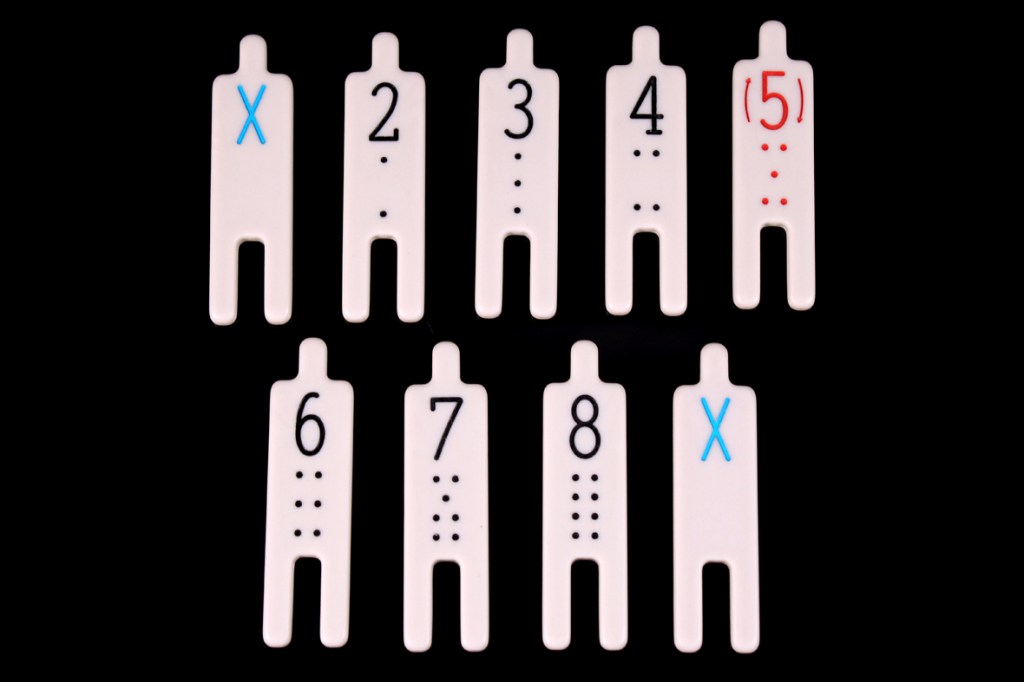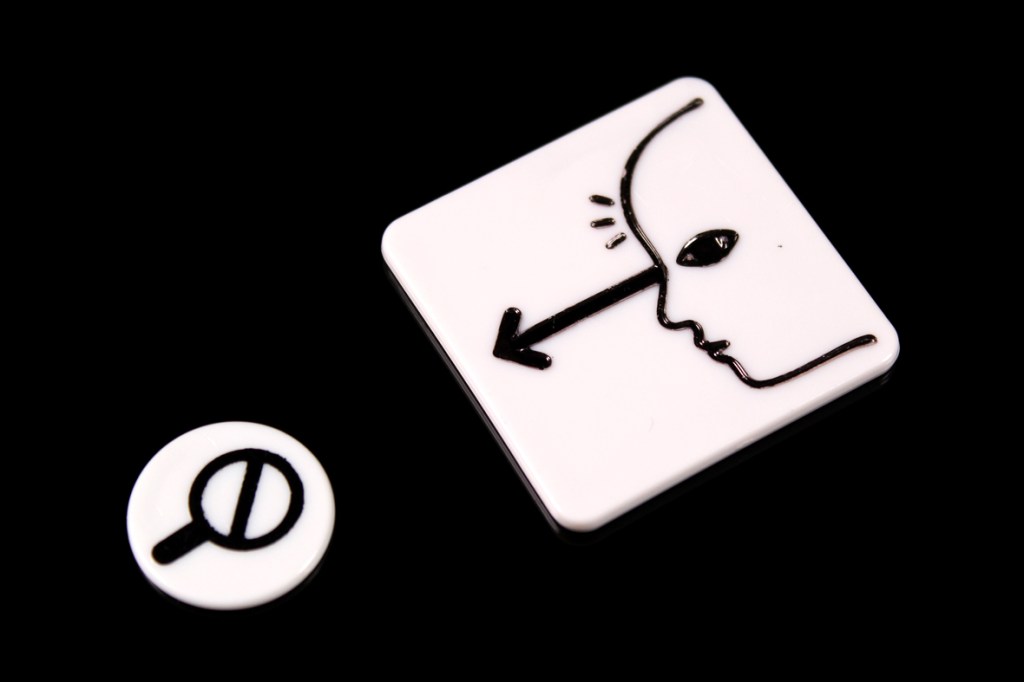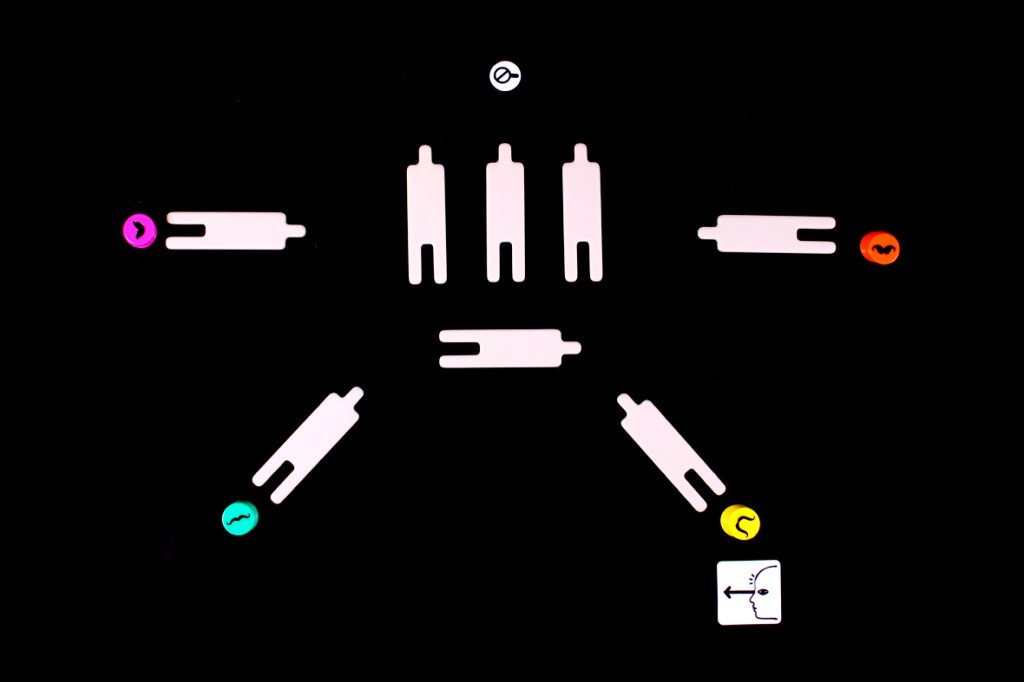
Base price: ~$19.
2 – 5 players.
Play time: ~20 minutes.
BGG | Board Game Atlas
Buy directly!
Logged plays: 7 of the new edition.
Oh hey, a revised edition of an Oink Game! I was pretty enchanted by the original In a Grove, so exciting to see a new version (especially one that expands the player count). And new tokens! Lots to like. I’ll be covering a few Oink titles in the next few weeks, months, et cetera, so, get excited for those! Oink continues to be one of my favorite publishers, so, I’m always excited to see what they’ve got going on, even if it’s a remake of a game I played previously! Let’s dive in.
Return to In a Grove, where a small town has had an almost implausibly-high murder rate. You all, as detectives, have decided to try your luck at solving the most recent one in town. The suspects all have different information, and you’ll have to get their stories straight if you want to figure out what’s happened. Just be careful! Any mistakes will get you branded as an inept detective, and too many mistakes and you’ll essentially be named America’s Worst Detective. Can you successfully solve this murder?
Contents
What’s New?
Not a ton has changed from the setup and gameplay of my original review, but there are a few key upgrades:
- Increased player count: In a Grove now supports two to five players! The two-player variant is just the three-player game without a third player (their assigned tile is just played face-up for both players to see).
- No more Tamper token: I barely even remember what that does, so it’s gone, now.
- Slightly changed game-end condition: Now, when a character is correctly guessed, all Detective Chips played on that character are returned to the box. Chips played on an incorrect character are given as Inept Detective Chips, following the standard rules (the player with the chip on top of the stack takes all of them).
- New “X” character added: The “X” characters cannot be the murderer, and so guessing them is obviously wrong. But sometimes you don’t always see the character you’re guessing, do you?
Beyond that, the game plays the same!
Player Count Differences

The only major difference is that, with more players, you start folding in the “X” characters, who can never be the culprit, under any circumstances. That leads to more people you don’t see, which makes the deduction more challenging (and more dangerous to be wrong, since you might take even more Inept Detective Chips at once). I do prefer In a Grove at higher player counts, as a result. Managing to trick someone into a misplay is pretty hard at lower player counts (but not impossible), and being able to trick a player into selecting an “X” with more players is uniquely satisfying. I appreciate that the two-player mode is just the three-player game with one tile face-up; players have, effectively, the same amount of information, and it makes the guessing and deduction challenging, which I like. Two-player deduction and bluffing games are a lot of fun, for me, because the thrill of just having to figure one person out is very, very fun. That said, there are a few two-player bluffing games that I absolutely love, so I’m fine either way. I’d probably most frequently play In a Grove with four or five, but be careful! It’s possible to lose In a Grove at five players in the first round, if every player guesses the same wrong character. The final guesser takes all five Inept Detective Chips and loses immediately. That can feel a bit dissatisfying, so, determine your strategy accordingly.
Strategy
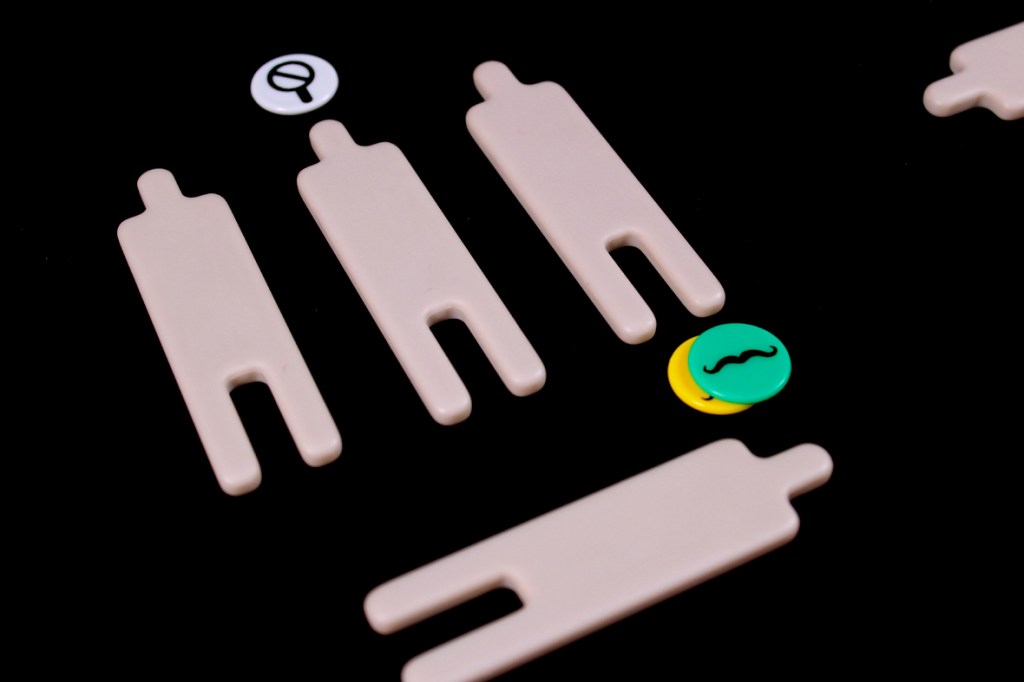
- If you’re not in the lead, you’ll need to get creative. Once you’ve taken a couple Inept Detective Chips, you can’t just abide and let the game keep happening; you have to take charge and uh, help other players lose if you want to get ahead in the game. This might mean making riskier guesses or bluffing about what you saw to try and convince someone to make the wrong choice, so that you can push them below you on score. It’s … rude, but it works.
- You don’t need everyone to agree with you; you just need one person to. As long as another player places their chip on top of yours, you’re safe, even if you’re wrong; they take the fall for it. It’s comforting, in a way, but make sure that you can get that coverage, if you want. This is kind of why going last in this game is rough.
- If you’re playing a five-player game, it’s much better to take one Inept Detective token than to take all five, if you’re the last player to go. If you’re not absolutely sure the rest of the stack is correctly placed (if all the chips are on one character), then you should place elsewhere. Worst-case, you take one Inept Detective Chip for just picking something obviously wrong. But that’s better than taking five because you got bamboozled and losing the game on the spot. It’s also more recoverable.
- You should absolutely do the probabilities when you’re trying to decide. Based on the information you have, what’s more likely to be the character you didn’t see? How does that affect your guess? Where are the Xs? What are the odds of each character being the highest-value (or the lowest)? Try to do the mental math quickly so that you can make a good decision.
- You can occasionally trick people into making a mistake if you know where the 5 is and they don’t. If you act as though the 5 is in play (you, for instance, saw the 5 in your starting characters and the three suspects are all high numbers, so you place your guess on the 6), you might be able to trick another player into following up your guess since they get the extra “information” that you chose a particular character without necessarily knowing where the 5 is or what character you picked. That generally only works if you were passed the 5 by another player, but it can work.
- Sometimes there’s no way to predict the correct outcome with 100% certainty. Don’t waste too much time agonizing; sometimes the best you can do is a 50-50 guess; you won’t always have perfect information in this game. It’s best to know when you do and when you don’t and just try and move on.
- When the Xs are involved, you can definitely trick players into making bad choices. It’s usually very funny. Since the Xs are always wrong, you might be able to successfully use them against other players. That will annoy them, but it’s very workable. With more players, there are even more character tiles that players don’t see, so the probabilities become harder to guess. As a result, some players tend to rely (too much) on how other players vote, which makes them susceptible to the bamboozle. Make it work for you.
Pros, Mehs, and Cons
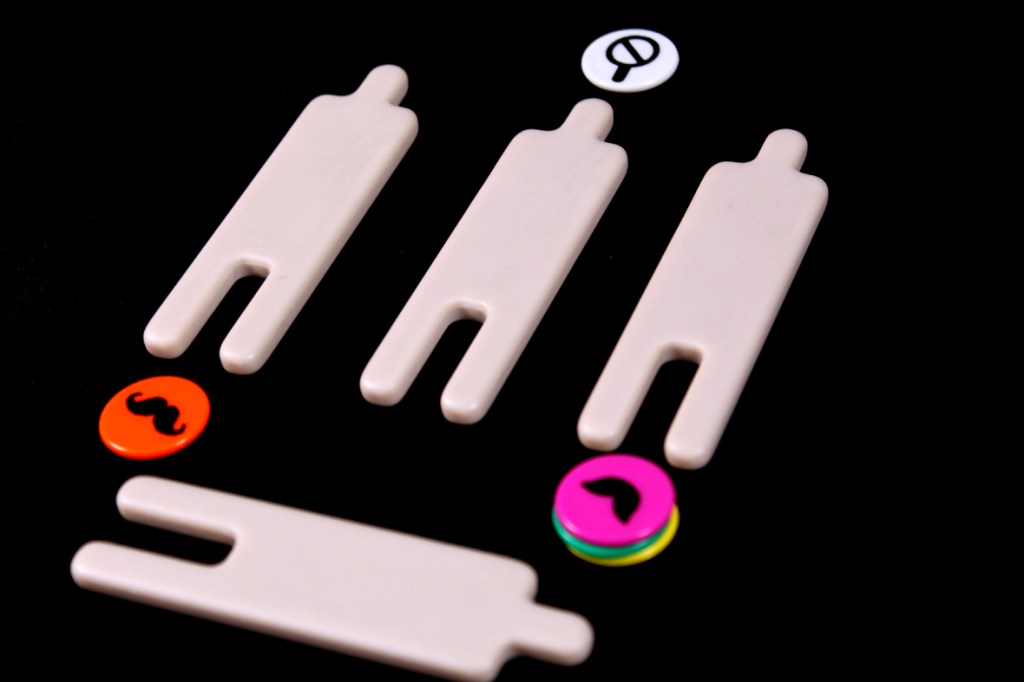
Pros
- I love the new components for this game. The mustache tokens might be one of my favorite components in any game? Hard to say, but it’s definitely up there and that’s a statement I’m comfortable making. They have a different mustache for each color!
- I also like that it has a full-sized box, now. I was never as enamored with the half-size boxes (or the 1.5x boxes); I prefer the standard and double-wide boxes. They’re easier to store. I guess that means I should get a new Kobayakawa, at some point. Oh well.
- The two-player game isn’t bad! I’m pleased with that. I appreciate that they really just said “it’s the three-player game” but with no dummy player, just open information. It’s a simple fix and it works quite well, here.
- I appreciate that the end of the game is better-defined than the previous edition. I really like that the game has a maximum of seven rounds; keeps things tight, even if it makes it hard to get ahead by tricking other players. It’s a challenge, I suppose!
- Also, I never really understood Tampering, so I’m fine with them getting rid of it. I think it lets you swap a character and the victim? Why? Is that helpful? Whatever. It’s gone now. Rest in peace, that feature.
- Higher player counts are a bit more interesting with the X token, which can make it a bit easier to bamboozle another player. I really like the X tiles, even if I, too, have gotten caught up in guessing a completely wrong character, before. It’s frustrating when it happens, but, it’s also deeply funny. Bit of both, I suppose.
Mehs
- It’s possible to lose the entire game in the first round of a five-player game, if everyone guesses the same suspect, which is … odd. It feels like it should just be “first to six Inept Detective Chips” or something in a five-player game, but, to be fair, it might be genuinely impossible to recover from a five-chip deficit in the first round, so, hard to say. It just feels odd that a player can actually lose the game in the first round.
Cons
- It’s very difficult to feel like you have agency if you get far behind, score-wise, since you not only need to play well, but you need to get lucky, as well. Winning relies a bit on being able to make other players lose, which is particularly challenging to do for players that you may not be able to affect. Plus, nobody’s particularly incentivized to help you, since they do just fine no matter who takes the Inept Detective Chips. It can be hard to get ahead, to some degree, which can feel a bit unsatisfying. The game is, however, short, so any errors or bad guesses only linger for so long.
Overall: 8 / 10
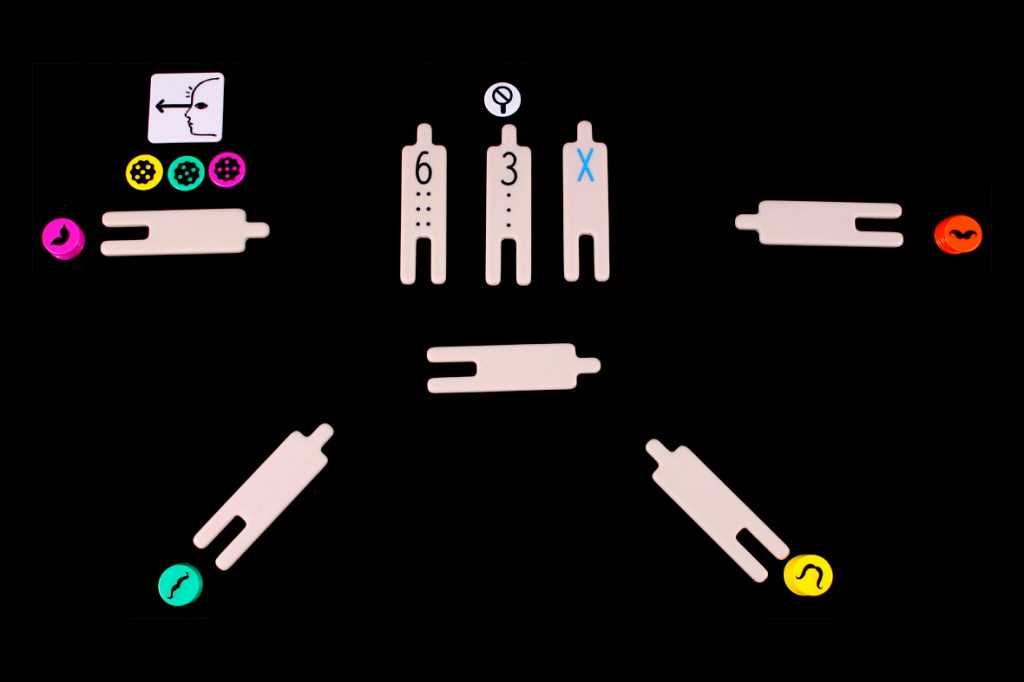
Overall, I think the revised edition of In a Grove is an improvement! I’m a bit amused, given that I gave the original an 8.25 / 10, but that also illustrates, to some degree, just how much a reviewer’s preferences can shift or creep in five years, I suppose. I’ve played a lot of games, since then. Nonetheless, I think the obvious improvement is the massive quality increase in components, which are quite nice. Swapping out the eye tokens for the detective mustaches may be a bit alienating to folks who can’t (or like me, prefer not to) grow facial hair, but they’re a fun bit of aesthetic to give our nameless sleuths some character, and I like that. The people tokens are now extremely nice, instead of just some regular punchboard, and, on the whole, it makes the game more tactilely satisfying to play. Love that. For the game itself, they expanded the player count from 3-4 to 2-5, and the game plays well at all player counts (though it can end rather quickly at five, which seems like an odd choice). I’m amused by some of the gameplay additions they added to make the deduction more challenging, like adding “X” characters (who can never be the culprit), and I think In a Grove shows the benefit of taking another stab at a good game with fresh eyes. I’m looking forward to my next game of In a Grove, and if you’re willing to risk being Today’s Worst Detective or you just want to bamboozle your friends with some flawed deduction, you might enjoy it as well!
If you enjoyed this review and would like to support What’s Eric Playing? in the future, please check out my Patreon. Thanks for reading!
